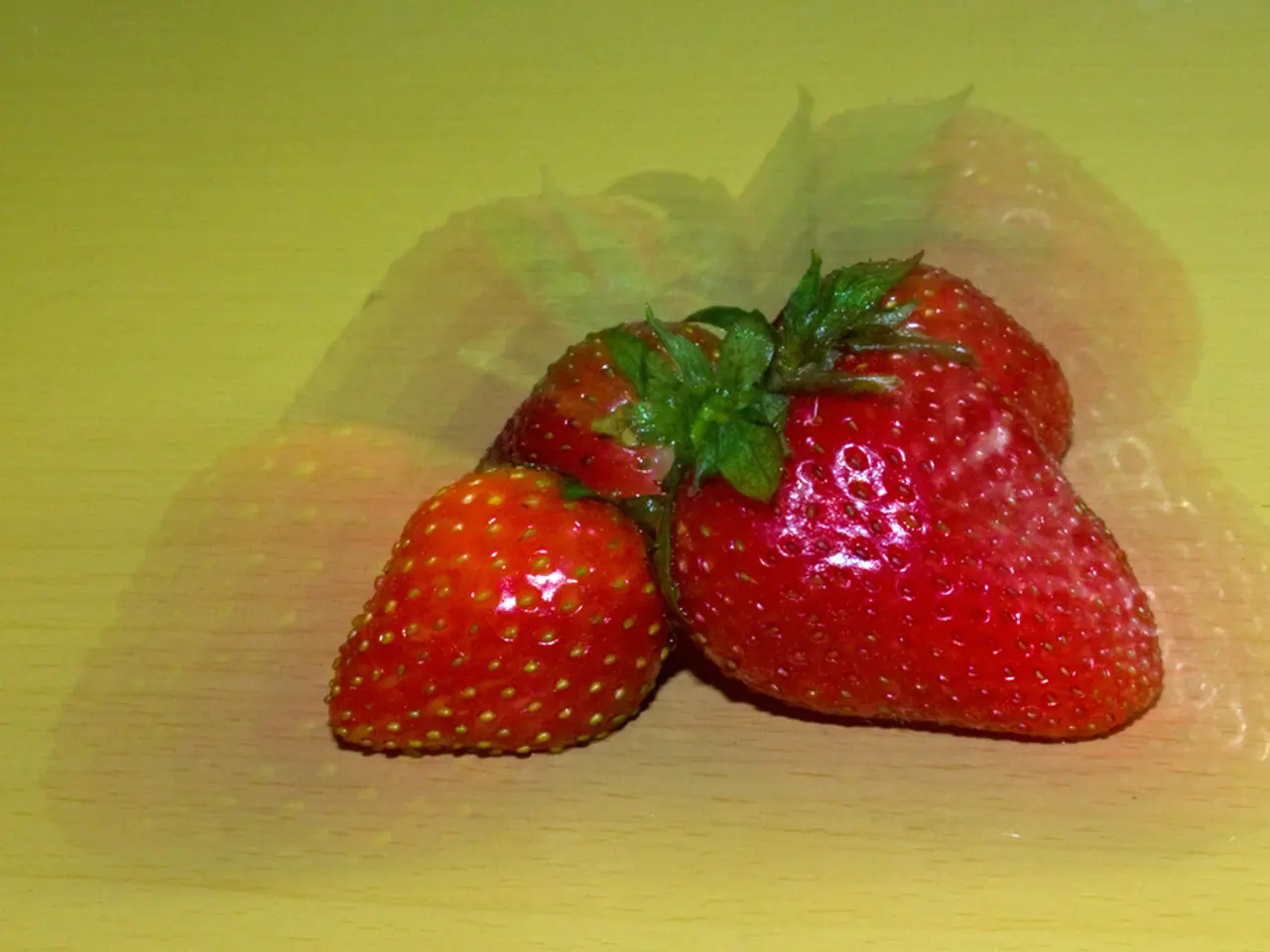Autonomous Agricultural Robots Take Strides in Farming Efficiency: The Case of SHIVAA
Automated Strawberry Harvesting: AI-Powered Robots Aid Farmers in Crop Production
In a groundbreaking development for the farming industry, an autonomous agricultural robot named SHIVAA is making waves. Developed by the German Research Center for Artificial Intelligence (DFKI), this robot is designed for autonomous strawberry harvesting using AI and is currently undergoing testing on the strawberry farm Glantz in Hohen Wieschendorf, Mecklenburg-Western Pomerania.
Development and Features
SHIVAA is the result of a collaborative effort between DFKI and the University of Applied Sciences Hamburg (HAW Hamburg). The robot is equipped with special cameras that enable it to independently recognise ripe strawberries in open-field cultures. SHIVAA navigates along rows of plants, picks ripe fruits with gripping arms, and places them in a harvesting box mounted on the device.
One of the key features of SHIVAA is its ability to operate at night, helping to avoid harvest losses and maintain fruit quality. The robot can operate for at least eight hours at a time, making it a valuable asset for farmers looking to increase efficiency.
Potential Applications for Other Fruit Varieties
The technology behind SHIVAA could potentially be transferred to the harvesting of other fruit varieties in the future. The robot's ability to operate in open fields makes it versatile for different types of crops. Adjustments in sensing technology and mechanical gripping systems could facilitate its use with fruits like blueberries, raspberries, or grapes.
By reducing labor costs and improving efficiency, autonomous robots like SHIVAA could significantly impact the affordability of various fruits, making them more competitive in the market.
Challenges and Future Developments
While SHIVAA and similar robots promise significant advancements, several challenges remain. Full commercial deployment of SHIVAA might take several years, with estimates suggesting up to seven years before it can be used in larger quantities on fields.
Continuous adaptation of regulations will be necessary to ensure safe and effective integration of autonomous robots into agricultural practices. Future developments may focus on enhancing the robot's navigation and decision-making capabilities to better handle diverse fruit types and environmental conditions.
In conclusion, SHIVAA represents a promising step forward in agricultural robotics, with potential applications extending beyond strawberries to other fruit varieties. The timeline for widespread use of the robot in agricultural operations is currently uncertain, with further testing and development needed. However, the potential benefits of this technology, including reduced production costs and improved quality, make it an exciting prospect for the future of farming.
Economic and social policy regarding the agriculture sector could be impacted by the development and widespread use of autonomous agricultural robots like SHIVAA. Furthermore, advancements in artificial-intelligence technology, such as the sensors and decision-making capabilities of SHIVAA, could have far-reaching implications for numerous industries, including farming, as they continue to evolve.




